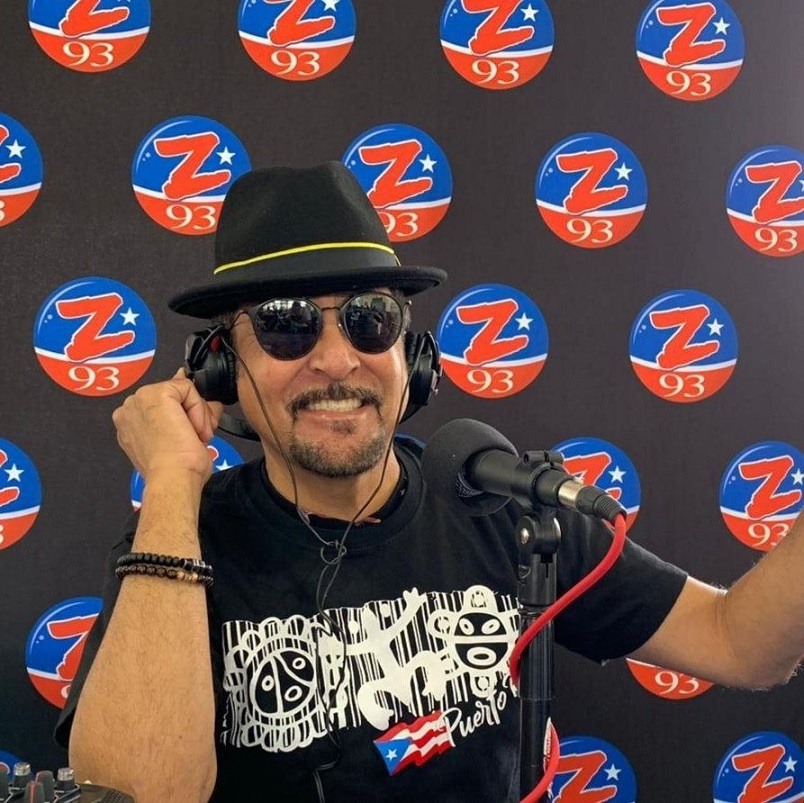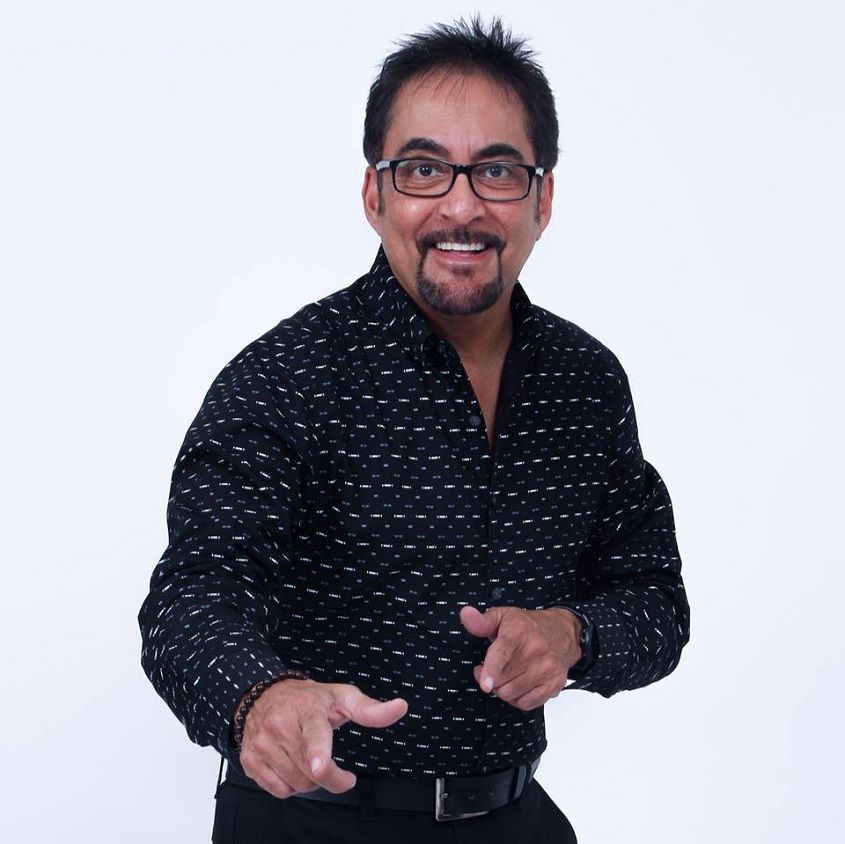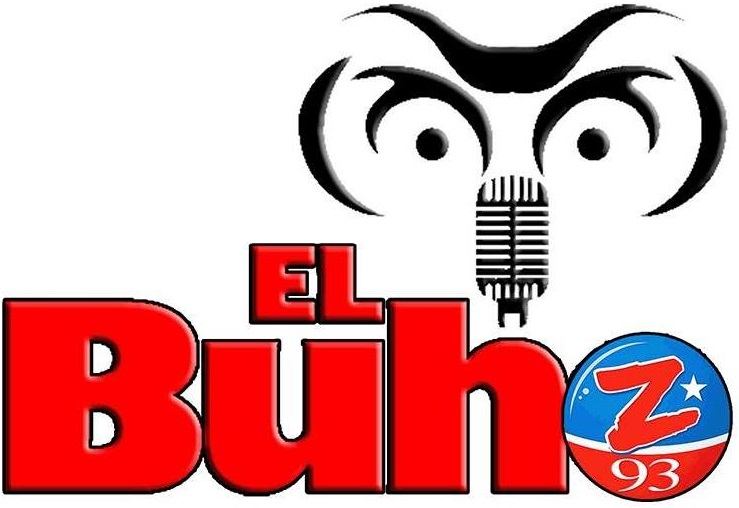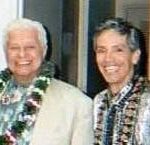Search Results for: Salsa
Europe – April 2020
Víctor Gabriel Rosario Durán
Latin America / San Juan / Puerto Rico
Many singers have passed through time in the world of music, this time we have the privilege of making our followers known to “Víctor Gabriel Rosario Durán“

Victor Gabriel Rosario Duran is a great singer and percussionist who was born in San Juan, Puerto Rico on June 27, who showed from a very young age a great interest in tropical genre music since he played drums with his father, who in turn was a percussionist, even with the passing of the years Víctor Gabriel with his sister imitated the Duet “Pimpinela”, making a waste of talents at family parties and at school, so his parents, seeing their son’s talent, decide to enroll him in the Ernesto Ramos Antonini free music school, entering through the percussion department.
During his studies at the music school, he took advantage of his free time to practice “singing” in the square and one day he caught the attention of one of the members of the Latin Revolution orchestra, being at that time of the school salsa orchestra, he was called to audition and was chosen as a singer.
By joining the orchestra they managed to win first places in the “Talent Shows” that they participated in and out of school; and over the years he creates his own orchestra where he manages to win first place as “Best Talent” in the school talent contest, as well as in many other “Talent Shows”. Then he went from percussionist to the singing curriculum to perfect his technique as a singer and from 1994 he joined the group “Caribe Tropical” of Mr. Jorge

At 21, he is part of the orchestra led by maestro Elías Lopés, where he recorded as the duo Gaby and Nelson. From the mid-1990s to the present day, Víctor Gabriel has been a singer, chorus girl and percussionist for local groups in Puerto Rico that make their presentations at the main hotels on the island, such as the Marriot Hotel, the now-defunct Hotel Cerro Mar de Dorado and Hotel San Juan, among others. He also continued his collaborations as a singer, backing vocalist and minor percussionist in Plena Libre, Tres Son Salsa, Zacandela, Atabal, the Orquesta La Offer. Don Perignon, and others.
Víctor Gabriel Rosario Duran participated for nine years as one of the main singers of the VSP Orchestra (Villariny Salsa Project), who performed in 2012 on the “National Salsa Day”, where he has had a great musical exposure enriching his extensive race; which has prepared him for what has been the dream of his life, his solo career. For the month of June 2019, Víctor Gabriel launches as a soloist with his first single “Mi Problema”, Salsa Version, which has been a resounding success on different stations worldwide.
Home Media Tour in Mexico and Colombia in its Caribbean Region visiting cities such as Barranquilla, Cartagena, Santa Marta, in the first one he appeared before a large audience LIVE in an activity called “HEROES IN COLOMBIA”, organized by the Military Police in the Battalion paradise, alternating with Chelito de Castro and Poncho Zuleta and which was covered by “EMISORA TROPICANA”.
He was also invited to participate in the “RANCHO CURRAMBERO INTERNACIONAL” in an event called “LA SALSA CONTINUES”, alongside great Colombian musicians such as Ray Palacio, Charlie Gómez, Nelson Fontalvo and Su Tribu Band among others. In less than four months, Víctor Gabriel was the winner with his song “Mi Problema” at the “Paoli Awards”, in the category “Salsa Revelation Artist 2019.”
On November 16, 2019, Víctor Gabriel Rosario Duran won the “Paoli Award”, “Salsa Revelation” in Orlando Florida.

On February 14, he released his song “ASI ES EL AMOR” authored by master John Dávila, on all digital platforms and is taking possession of the different hit parades of stations in the world. Right now he is recording what will be his complete record work alongside prominent artists and musicians from Puerto Rico, such as Jay Lugo, the most important arranger on the island at the moment and who recently won “Grammy” awards with different artists, Omar Lugo and Luis Omar salseros of the new blood of salsa, John Pito Dávila, trombonist and director of different orchestras such as Puerto Rico Power, The John Dávila Orchestra and his Koketones de la Salsa, Viti Ruiz among others.
“What we are sure of is that Víctor Gabriel Rosario Duran, singer and percussionist, is a Boricua who makes his way safely into the Salsa of the new generation.”
Néstor Galan “El Buho” – SAFERRRROOOO!!!
Latin America / Puerto Rico / San Juan
Néstor Rodríguez Búonomo better known as Néstor Galán “El Búho Loco” was born on January 6, 1958, in the state of New York.

His parents are Mrs. Eufemia Búonomo and Mr. Julio Rodríguez. He is the eldest of three (3) brothers and father of Julixa Rodríguez Ramírez, who they have heard on the radio with his father.
At the early age of five (5) years, he moved with his parents to Cayey, Puerto Rico.
He studied at Benigno Carrión Elementary School, Benigno F. García Middle School, where he studied music and was part of the School Band as a trumpeter.

Then he goes to the Miguel Meléndez Muñoz High School and the opportunity arises to be part of one of the most important groups of popular music; The Student Tuna of Cayey, in which she remained for five years as a singer, participating in 4 long-playing albums and in trips abroad.
He was part of the dramatic art group participating in several plays as an actor.
Upon graduating in 1976, he went on to study at the Rio Piedras Commercial Technical Institute and then at the Universidad del Sagrado Corazón.
In 1979 the Super 97 radio station specialized in the salsa genre began to work at Radio Musical under the name of Néstor Galán, they called him “Galán” because he always liked to dress well. This is his first experience as a broadcaster.

In 1981 he went to work at the radio station Z-93 as a technician, operator and in its promotions.
In 1982 he worked as a production assistant on the program “Viva la Salsa” (WAPA-TV) together with Marianito Artau.
In 1983 he began as a night time announcer in this important radio station and that is when the announcers decide to give themselves nicknames after animals, being in the night time they decide to call him “El Búho”.

In 1985 he began to work during the day and since the owls do not go out during the day, the name “El Búho Loco” emerged. He has worked in all the National Salsa days.
Facebook: https://www.facebook.com/NestorGalanZ93/
Rolando Sanchez
USA / Hawaii / Honolulu
Rolando Sanchez: Percussionist, Singer, Composer, Producer and leader is the best selling Latin American artist in Hawaii

Rolando Sanchez Percussionist – Singer – Songwriter – Producer, leader of Hawaii’s Premiere, longest running, bestselling Latin recording artist from Hawaii.
In this Site you will experience the history and achievements of this musical Family called “SALSA HAWAII” for over 20-years, performing, recording, touring and just sharing the love and ALOHA of our Latin Music Wolrdwide.
With CDs sold Worldwide and the number of awards and accolades from press, government, musical organizations, community organizations, locally, nationally and Internationally.
HONOLULU TROPICAL
Celebrating 20 years of Latin Music in Hawaii Rolando Sanchez Salsa Hawaii Singer, Songwriter, Percussionist (timbales-congas-bongos-drums) Recording Artist, and Producer. Born in Masaya, Nicaragua, to a musical, artistic family; his father, an accomplished songwriter, pianist, and singer.
His mother also played piano and sang as with most of his immediate family. His musical influence began at a very young age playing drums with neighbourhood kids emanating the music of the time (i.e.: Beatles, Trini Lopez, Paul Anka, etc.).
In his early teens he began listening to more Latin music styles, which formed the basis for his music today. The bands that influenced him at the time were Tito Puente, Celia Cruz, Billo’s Caracas Boys, Sonora Matanzera, Sonora Santanera, Daniel Santos, and a Nicaraguan band Los Satelites del Ritmo.

In the late 60s, the family relocated to San Francisco, California where he grew up and truly realized that music was to be his life. The music scene in the Bay Area at this time was very diverse. He delved in all the different styles.
During that time, Latin music was beginning to blossom and all kinds of Latin-style bands such as The Aliens, Latin Bloods, Los Beamers, Bandido, Unidad 77, and Limbo began to play in and around the Bay Area.
Cesar’s Club was THE place to be to experience the best Latin musicians (Pete and Coke Escovedo, Roger Glenn, Luis Gazca, Pablo Telles, Victor Pantoja, performing live.
That’s when Rolando Sanchez realized his passion for Latin music and particularly Timbales. Then it happened! Santana Band came out and proved to be the biggest inspiration for all Latin musicians in the Bay Area (the world) including Rolando. It seemed that Latin bands were coming out of the woodwork: Azteca, Malo, Sapo, Dakila, and Salsa De Berkeley to name a few. He played with different bands in San Francisco’s Latin music scene and shortly thereafter, decided it was time to start his own band called SOLAR; they played a mixture of Latin rock and Latin jazz fusion
Rolando Sanchez and his brother Mario (still playing congas with Bay Area bands) were also some of the guys hanging out at Dolores Park in the Mission District playing congas and timbales along with such notables as Raul Rekow, Karl Perazzo, Chepito Areas, Carlos Badia, John Santos, and many other well-known Bay Area Latin percussion artists of today.
His band gained popularity and started playing the circuit where he met and befriended such artists as Pete and Sheila E. and Master Armando Peraza who helped develop his affinity for percussions.
While playing in the Bay Area, SOLAR was billed with bands like Azteca, Azuquita, Sapo, Cal Tjader, Cesar’s All-Star Band, Willie Bobo, and others.
After their break-up, he formed the band SUNSMOKE together with his uncle, Freddie Velasquez, who had just returned to the Bay Area from touring the country with the Phil Driscoll Band. SUNSMOKE quickly became well-known in the Bay Area and they toured the west coast and Canada where they opened for blues master B.B. King and performed at the Canadian Rock Festival with bands from all over the world.
After a couple of very busy years, including recording some demos for major record labels, they broke up and Rolando spent some time in Los Angeles checking out the music scene there. Upon returning to the Bay Area, he joined MESSIAH, one of the hottest Funk/Gospel/Rock/Disco bands. Their single, “Get up on Your Feet and Dance”, became a hit in the International disco scene. MESSIAH then went on to Japan where they enjoyed instant success and toured for 4 months. Shortly after their return, the band broke up and the Rolando Sanchez Band was born. Composing and writing his own material, Rolando released his first single cassette with two original songs, “She’s the Lady” and “Cold Hearted Woman”.

She’s the Lady” was made into a music video shown on local stations on both east and west coasts at the very beginning of the MTV movement. It featured some of the Bay Area’s nest musicians including vocalist Jo Baker (Elvin Bishop Band). After being in the Bay Area for nearly 20 years, Rolando felt the need for a change of pace in his life. In 1984, he visited his sister in Hawaii and the rest, as they say, is history.
Not long after arriving in Honolulu, Rolando decided to make it his home and the place where he would throw his musical fate to the wind.
- His very first musical engagement in Honolulu was at the Waikiki
Shell with one of Hawaii’s hottest singer/songwriters of that year, Mr. Audy Kimura, in celebration of 25 Years of Statehood. This made it all the more clear to him that he was in the right place.







